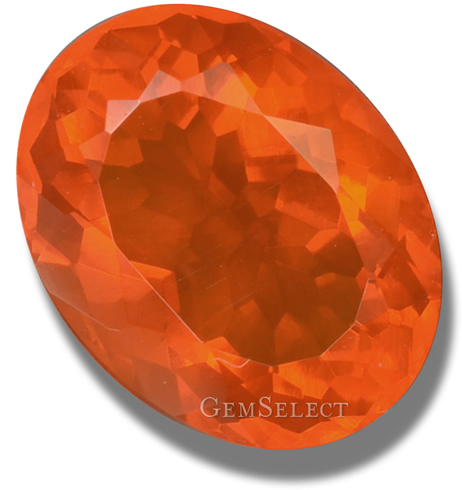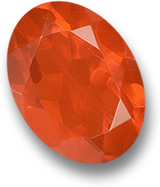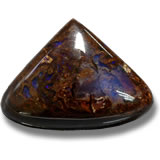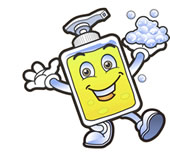Fire Opal Gemstone Information

About Fire Opal - History and Introduction
Fire opal stands out as a gem-quality variety of amorphous hydrated silicon dioxide, lacking any crystalline structure. Similar to other opals, it contains between three and ten percent water - sometimes up to 21 percent - which makes it quite delicate. You need to shield it from heat and strong light to prevent drying and cracking.
Unlike many opals prized for their play of color, fire opal shines through its vibrant body color. Most pieces don't show that shifting rainbow effect, though some might flash bright green. The name comes from its fiery orange tones, but it can also appear white or brown. Darker brownish types often display more play of color than the brighter golden ones. If it lacks play of color, folks sometimes call it jelly opal.
Thanks to its transparency, fire opal is usually faceted, not cut as a cabochon like opaque opals. But for brownish varieties with play of color, a cabochon cut helps bring out that effect. Explore more details about fire opal characteristics.

Identifying Fire Opal
Fire opal is one of several opal varieties out there. It looks its best in daylight, right after sunrise or before sunset - that's when its colors really pop. What sets it apart is that distinctive fiery hue, and it doesn't usually show much play of color like other opals do.
Often, fire opal has a hazy or cloudy look due to a bit of opalescence, which is that milky glow. Just to clarify, opalescence refers to the iridescence in common opals without play of color, not the full rainbow display.
Fire Opal Origin and Sources
Fire opal is closely linked to Mexico, where it's mined in states like Queretaro, Hidalgo, Guerrero, Michoacan, Julisio, Chihuahua, and San Luis Potosi. The key mines in Queretaro date back to 1835 and keep producing today. Some Mexican opal shows a bluish or golden sheen; that's called Mexican water opal or hydrophanous opal, not fire opal.
You can also find smaller amounts in places like Oregon in the USA, Guatemala, Australia, and British Columbia in Canada. More recently, big deposits turned up in Northeast Brazil.
Buying Fire Opal
When you're shopping for fire opal, let's break it down by key factors.
Fire Opal Color
The color spectrum is broad - yellow to orange, brown to red - and some stones mix several shades. Top picks often feature a vivid red-orange blend. Sunny yellows are popular, but saturated oranges and reds fetch higher values. Brazil offers a golden type that looks like hessonite garnet or hyacinth zircon.
Fire Opal Clarity and Luster
Good fire opal can be translucent to transparent, unlike cloudier lesser grades. When polished, it has a subvitreous, waxy to resinous shine.
Fire Opal Cut and Shape
Most opals get cabochon cuts due to opacity, but transparent fire opal is faceted. Brown ones with play of color go cabochon to enhance that. Favorites include ovals, rounds, cushions, and pears. Cantera opal keeps the host rock attached in the cut.
Fire Opal Treatment
Fire opal isn't typically treated or enhanced, though fakes are out there.
Fire Opal Gemological Properties
| Chemical Formula: | SiO2_nH2O Hydrous silicon dioxide |
|---|---|
| Crystal Structure: | Amorphous; kidney or grape-shaped aggregates |
| Color: | Yellow to orange, orange-red |
| Hardness: | 5.5 to 6.5 on the Mohs scale |
| Refractive Index: | 1.37 to 1.52 |
| Density: | 1.98 to 2.50 |
| Cleavage: | Indistinct |
| Transparency: | Transparent to opaque |
| Double Refraction or Birefringence: | None |
| Luster: | Subvitreous to waxy, resinous |
| Fluorescence: | Usually none |
Please refer to our Gemstone Glossary for details of gemology-related terms.
Fire Opal - Related Gemstone Varieties

Opals come in precious and common types. Sometimes, ammonite, labradorite, mother-of-pearl, or moonstone get confused with opal. Mexican fire opal cut with host rock is 'Cantera opal'. Discover comprehensive information on opal gemstones.
Most Popular Similar or Related Gemstone Varieties and Trade Names:
Chocolate opal, boulder opal, black opal, common opal, white opal, matrix opal, opal in matrix, and doublet opal are widely known.
Lesser-Known Similar or Related Gemstone Varieties and Trade Names:
Cantera opal, layer opal, agate opal, angel skin opal, wood opal, honey opal, hyalite, hydrophanous opal, porcelain opal, moss opal, jelly opal, crystal opal, harlequin opal, opal triplets, girasol, prase opal, pipe opal, and wax opal are rarer.
Fire Opal Metaphysics
According to an old Australian Aboriginal legend, the Creator descended on a rainbow with a peace message, and stones where his feet touched sparkled to life - that's opal's origin. The name 'opal' from Greek 'opallus' means seeing color change, later Latin 'opalus' for precious stone.
For centuries, people thought opal had healing powers, easing depression and helping find true love. It boosts originality and creativity. Being porous, it absorbs thoughts and amplifies emotions. Fire opal holds karmic energy for justice and protection.
Since Ancient Rome, opal's play of color was treasured. In the Middle Ages, it was lucky for showing many gem colors. Not all cultures agreed - Russian superstition ties it to the evil eye. Opal is October's birthstone, offering astrological benefits.
Disclaimer: Metaphysical and alternative crystal healing powers are not to be taken as confirmed advice. Traditional, ceremonial, and mythological gemstone lore is collected from various resources and does not represent the sole opinion of any company. This information is not to replace the advice of your doctor. Should you have any medical conditions, please see a licensed medical practitioner. No guarantees are made for any claims or statements of healing or astrological birthstone powers, and no liability is accepted under any circumstances.
Fire Opal Jewelry
Opting for loose gemstones over preset jewelry lets you inspect quality better, as settings can hide flaws. It also gives more options and value.
Lapidaries dry fire opal before cutting to stabilize it. Its softness (5.5 to 6.5 Mohs) suits pendants, earrings, brooches best. Though used in rings, it's not ideal - go for bezel settings if you do.
Note: Buy colored gemstones by size and not by carat weight. Colored stones vary in size-to-weight ratio. Some stones are larger and others are smaller than diamond by weight in comparison.
Fire Opal Gemstone Care

Fire opals are sensitive due to high water content - up to 21 percent - so they can craze from dehydration, cracking and fading. Avoid sudden temperature changes. Store with a damp cloth or cotton ball in a sealed plastic bag to keep moisture in. Learn essential tips for caring for opals.
With hardness of 5.5 to 6.5, they scratch easily - dust has quartz at 7 Mohs, so wiping reduces polish over time. Clean with warm water and soft cloth; skip bleach, chemicals, or ultrasonics, as vibrations can crack them. Remove jewelry before chores or sports.
Repairing damaged opals is tough and experimental, like using resin for cracks. Often, replacement is better.
Frequently Asked Questions
What is fire opal made of?
Fire opal is a form of amorphous hydrated silicon dioxide, containing water as part of its structure.
Where does fire opal get its name from?
It derives from its fiery orange color, though it can be other hues like yellow or brown.
Is fire opal the same as other opals?
No, it stands out for its body color rather than play of color, and it's often transparent enough for faceting.
Where is fire opal found?
Mainly in Mexico, but also in Brazil, the USA, Guatemala, Australia, and Canada.
How do I care for fire opal?
Protect from heat and dryness, clean gently with warm water, and store with moisture to prevent cracking.

